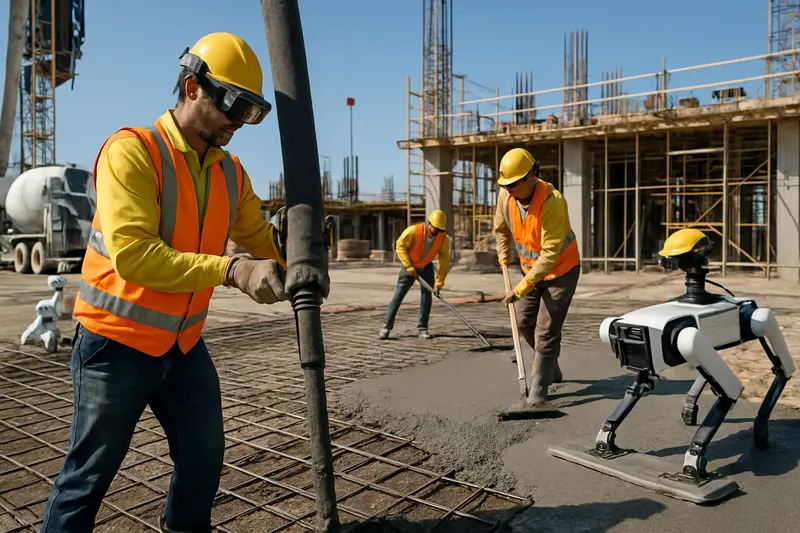
Top 5 Construction Technologies Revolutionizing Concrete Projects in 2025
As the construction industry advances, technology plays a crucial role in shaping concrete projects. From smarter materials to automated processes, these innovations are empowering concrete construction companies and specialists like your trusted Concrete Driveway Contractor to deliver better results faster and more sustainably. Embracing these top five building tech trends in 2025 can give your business a competitive edge and ensure superior quality in every concrete application.
Smart Concrete Mixes with Embedded Sensors
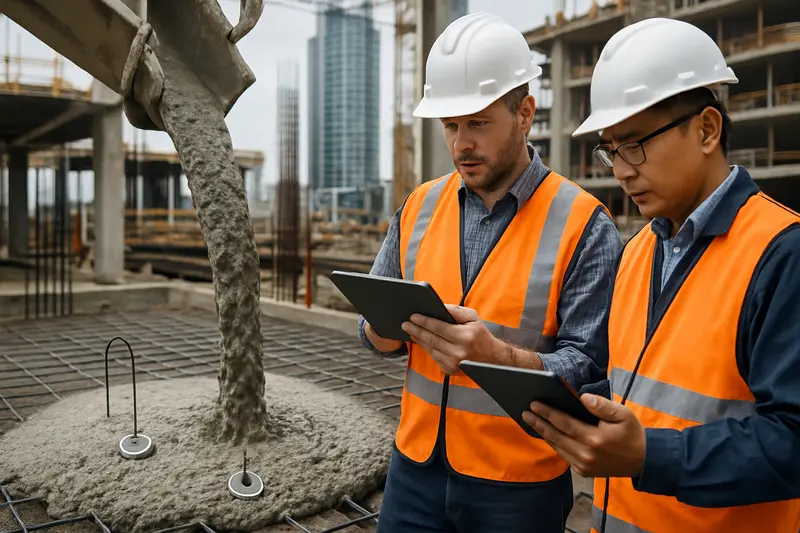
Embedded sensors within concrete mixes represent a significant advancement in construction technology, offering real-time insights into the structural health and conditions of concrete structures during pouring and throughout their lifespan. During pouring, high-resolution images often capture construction workers carefully integrating these sensors directly into the wet concrete, ensuring they are securely embedded without disrupting the mix’s integrity. These sensors are typically small, durable devices that can monitor parameters such as temperature, strain, humidity, and structural shifts, transmitting data wirelessly to a centralized digital platform. This continuous flow of information allows project managers and engineers to observe the curing process closely, detect potential issues early, and adjust curing or reinforcement strategies accordingly, significantly reducing the risk of future failures. The use of embedded sensors empowers teams to make data-driven decisions, resulting in higher quality and longer-lasting structures. Additionally, these smart mixes facilitate predictive maintenance, enabling proactive interventions long before visible cracks or failures occur. The monitoring reads easily on digital tablets, giving workers immediate access to critical data that enhances on-site decision-making. By integrating these sensor-infused mixes into their projects, construction teams achieve greater precision and safety, often leading to savings in time and costs. As the technology continues to evolve, sensor accuracy improves, and data analytics become more sophisticated, the role of smart concrete mixes is poised to expand even further. In the context of large-scale infrastructure or high-value commercial projects, this innovation not only improves construction outcomes but also extends the lifespan and resilience of vital structures. For those interested in staying ahead of construction innovations, exploring the integration of embedded sensors into concrete mixes is a crucial step toward smarter, more sustainable building practices. To learn more about reliable concrete solutions and innovative building techniques, visit this resource.
Automated Concrete Finishing Robots
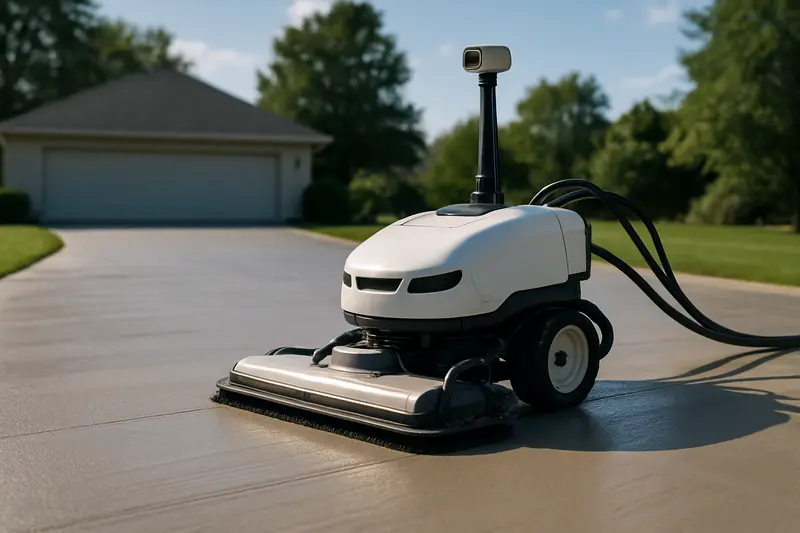
The integration of autonomous robots into concrete finishing marks a significant leap in construction technology, especially in 2025. These intelligent machines are designed to perform precise finishing tasks, such as smoothing, troweling, and texture application, with minimal human intervention. An image capturing an autonomous robot working meticulously on a concrete driveway illustrates how these robots operate. Guided by sophisticated sensors and real-time data, they move seamlessly across surfaces, ensuring an even, high-quality finish that meets stringent standards.
Supervised by experienced construction workers, these robots do not replace human expertise but enhance it by handling repetitive, labor-intensive processes. The supervising worker oversees the robot’s movements, makes adjustments when necessary, and monitors for potential issues. This collaborative approach optimizes productivity and reduces the risk of human error, leading to more consistent results.
What makes these finishing robots revolutionary is their ability to adapt to varying site conditions. Equipped with advanced sensors, they detect surface irregularities, adjust their finishing techniques accordingly, and ensure a uniform texture across large areas. This level of precision was challenging to achieve manually, especially over extensive projects like driveways and slabs. By automating these tasks, crews can allocate their time to more complex aspects of construction, boosting overall project efficiency.
The deployment of autonomous finishing robots also offers enhanced safety. With robots handling the active finishing work, workers are less exposed to potential hazards such as dust, noise, and mechanical accidents. Moreover, their consistent movements reduce the likelihood of finishing defects, which can otherwise lead to costly rework and delays.
Technological advancements in robotics, combined with real-time data analytics, are enabling these machines to learn and improve their techniques over time. Integration with Building Information Modeling (BIM) systems allows for precise path planning and quality control, ensuring the finished surface precisely matches design specifications.
As the industry advances, the role of human supervision remains crucial, but the scope shifts toward more strategic oversight and quality assurance. Construction companies focusing on innovation find that employing finishing robots not only accelerates project timelines but also elevates the quality standards of finished concrete surfaces. For further insights on how technology is transforming construction practices, exploring this resource on concrete repair services can offer valuable perspectives.
3D Concrete Printing for Custom Structures
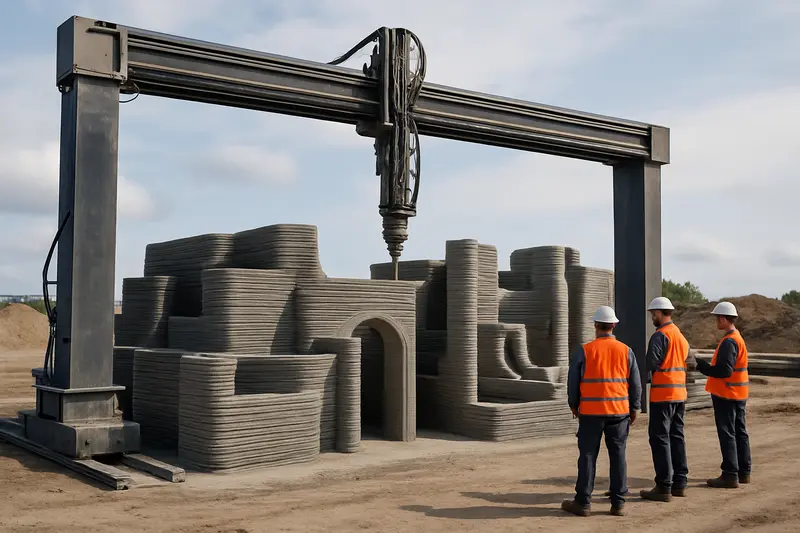
The scene unfolds on a spacious construction site where a massive 3D printer, resembling a futuristic mechanical behemoth, is actively constructing intricate concrete architectural forms. The printer’s towering arms glide with precision, layer upon layer, depositing concrete in complex, organic shapes that would be impossible with traditional methods. Nearby, a team of workers observes intently, marveling at the seamless integration of automation and craftsmanship. This cutting-edge technology transforms the landscape into a showcase of innovation.
3D concrete printing represents a significant leap forward in achieving highly customized, complex structures quickly and efficiently. Unlike conventional construction, where formwork and manual labor limit design possibilities and extend build times, this technology employs computer-controlled extrusion to produce precise shapes tailored to specific architectural visions. The machine’s ability to interpret digital models directly onto the site drastically reduces material waste and minimizes on-site labor, promoting sustainability and cost-effectiveness.
What makes this approach so revolutionary is not just its speed but its adaptability to bespoke architectural demands. Instead of assembling prefabricated elements, designers can craft unique, organic forms directly in concrete, integrating intricate details that would be resource-intensive or impossible by traditional means. This opens new frontiers for architectural expression, allowing for fluid, dynamic structures that blend aesthetics with functionality.
The process begins with digital design, often incorporating complex geometries optimized for structural performance and visual appeal. Once finalized, the design is translated into a machine-readable code, guiding the robotic arms of the 3D printer. As the printer moves across the construction site, it extrudes a specially formulated concrete mixture, which is designed to cure quickly and adhere firmly even in layered configurations. This on-site construction reduces the need for extensive formwork and reduces logistic complexities.
In addition to creative freedom, the technology ensures high consistency and precision. Build errors common in traditional methods are minimized, leading to improved overall quality. The ability to rapidly prototype and iterate on designs means that innovative, custom features—such as complex facades and structural ornaments—can be realized with ease. Increasingly, construction teams are integrating this method into projects where aesthetic detail, speed, and sustainability are paramount.
This leap towards automated, digital fabrication aligns with broader trends in construction, emphasizing sustainable practices and smart design. For example, more sustainable concrete formulations are being developed to complement this technology, reducing carbon footprints. Additionally, the integration of augmented reality tools in planning stages ensures that architects and engineers can visualize and modify designs seamlessly before printing begins. Such advancements highlight the transformative potential of 3D concrete printing in shaping the future of building architecture and urban development.
For those interested in how such innovations are transforming the construction landscape, it’s worth exploring how integrated digital tools, like [augmented reality], enhance project planning and execution, bridging the gap between design intent and on-site reality.
Augmented Reality (AR) for Project Planning
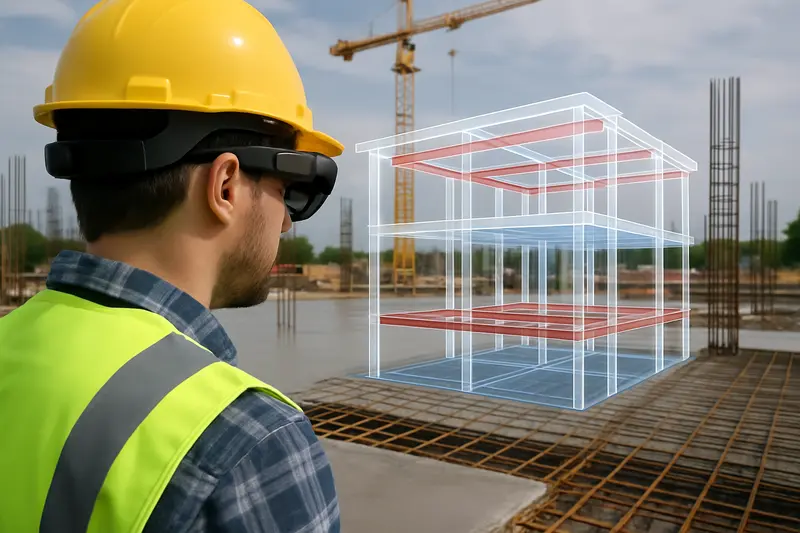
The integration of Augmented Reality (AR) into concrete project planning marks a significant shift towards more precise and efficient construction workflows. By equipping supervisors with AR glasses, teams can overlay detailed virtual models directly onto real-world sites, creating a seamless fusion of digital design and physical space. This technological leap allows for instant visualization of complex concrete structures, enabling real-time assessments that were previously impossible.
When a construction supervisor dons AR glasses, they gain the ability to walk through the project site while simultaneously viewing a precise virtual replica of the intended concrete elements. This immersive experience significantly reduces misinterpretations that often occur with traditional 2D plans or even static 3D models. The virtual overlay highlights exact placement, dimensions, and structural details, helping identify potential clashes or design inconsistencies before the first batch of concrete is poured.
Furthermore, AR facilitates improved coordination among different teams. Engineers, foremen, and onsite workers can refer to the same spatial understanding, ensuring that every stakeholder aligns with the design intent. This shared visualization minimizes costly rework and accelerates decision-making processes.
In practical terms, AR tools enhance project accuracy, especially for complex shapes or custom formworks that demand meticulous execution. For example, when constructing intricate foundations or unique architectural elements with concrete, immediate visualization helps refine forms and placement strategies, reducing material waste and ensuring compliance with design specifications.
The ability to visualize modifications on-site also reduces dependency on paper drawings or computer screens, which can be disjointed from physical conditions. Instead, supervisors can instantly perform virtual walkthroughs, evaluate different scenarios, and approve adjustments in real time. This agility translates into reduced lead times and optimized resource allocation.
As the industry advances, integrating AR into construction workflows will become more streamlined, supported by user-friendly interfaces and enhanced spatial mapping capabilities. These innovations will not only improve accuracy but will also elevate safety standards, as workers can identify potential hazards within the virtual overlays before physical work begins.
Overall, AR-driven project planning is revolutionizing how concrete projects are conceptualized, interpreted, and executed, leading to higher-quality outcomes and more efficient construction processes. For companies interested in harnessing this technology, exploring AR’s potential—such as detailed site reviews or precise formwork positioning—can be a transformative step towards modernizing their concrete operations. To see how these advancements align with overall project success, it’s essential to stay updated through resources that highlight industry-leading practices in construction technology.
Eco-Friendly Concrete Materials with Carbon Capture
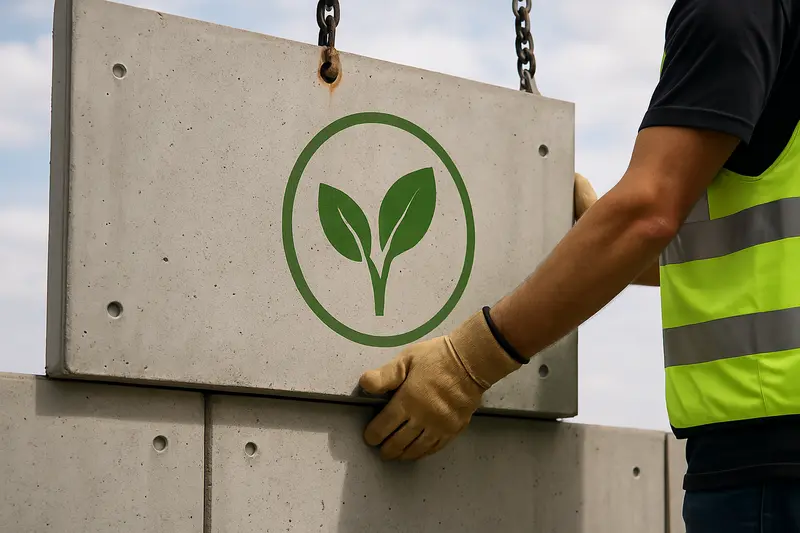
As sustainable practices gain momentum in construction, eco-friendly concrete materials equipped with carbon capture technology are emerging as a pivotal innovation. These materials are designed to significantly reduce the carbon footprint of concrete projects by capturing and storing CO₂ emissions during production and even over their service life. In modern concrete applications, utilizing such advanced materials not only aligns with green building standards but also enhances overall project sustainability.
One of the most promising approaches involves incorporating carbon capture directly into the production process of eco-friendly concrete. This technique captures CO₂ emissions from cement manufacturing—one of the largest industrial sources of greenhouse gases—and integrates the captured carbon into the concrete mix. The CO₂ can react with calcium compounds in the cement, forming stable carbonates that improve the material’s durability and strength. This process effectively sequesters carbon within the concrete, preventing its release into the atmosphere.
Furthermore, the choice of sustainable raw materials complements this technology. Reclaimed or recycled aggregates reduce extraction impacts, while supplementary cementitious materials like fly ash or slag replace traditional cement, decreasing overall emissions. These materials, combined with carbon-capturing binders, yield concrete that is both environmentally responsible and high-performing.
In addition to mixture innovations, modular construction techniques—such as prefab panels—play a vital role in sustainable concrete projects. For driveway installations, modular panels made from eco-friendly, carbon-captured concrete offer numerous benefits. They allow for rapid assembly, minimizing on-site waste and energy consumption. These panels can be prefabricated with precision in controlled environments, ensuring consistent quality and reducing the need for extensive on-site labor and machinery.
Design considerations for modular panels also emphasize recyclability and ease of installation. Using lightweight but durable materials ensures ease of handling during construction. Moreover, the panels’ design can incorporate permeable surfaces or integrated drainage features to support sustainable stormwater management. This approach not only reduces environmental impact but also improves the longevity and aesthetic appeal of driveways.
The adoption of eco-friendly concrete with carbon capture in driveway projects exemplifies how innovative materials and techniques can transform construction practices. By prioritizing sustainability without compromising quality or efficiency, these materials contribute to a greener construction industry and help meet ambitious environmental goals. For contractors interested in exploring these cutting-edge solutions, understanding the integration of sustainable materials and modular systems will be essential for future-proofing their projects and aligning with evolving regulations.
Final words
Incorporating these five cutting-edge construction technologies into your concrete projects in 2025 can significantly enhance efficiency, durability, and sustainability. For concrete construction companies and specialists like your trusted Concrete Driveway Contractor, staying ahead of these innovations ensures superior quality and competitive advantage. Embracing advanced tools and methods today paves the way for a smarter, greener future in concrete construction.
Find the Best Concrete Contractors in Houston — Join our directory today!
Learn more: https://concretecontractorshouston.com/contact/
About us
Join the Featured Listings on Concrete Contractors Houston and put your business in front of homeowners, builders, and businesses actively searching for concrete experts like you. As a Featured Contractor, your listing appears at the top of our directory—guaranteeing maximum visibility and making you the first choice in your service area.
